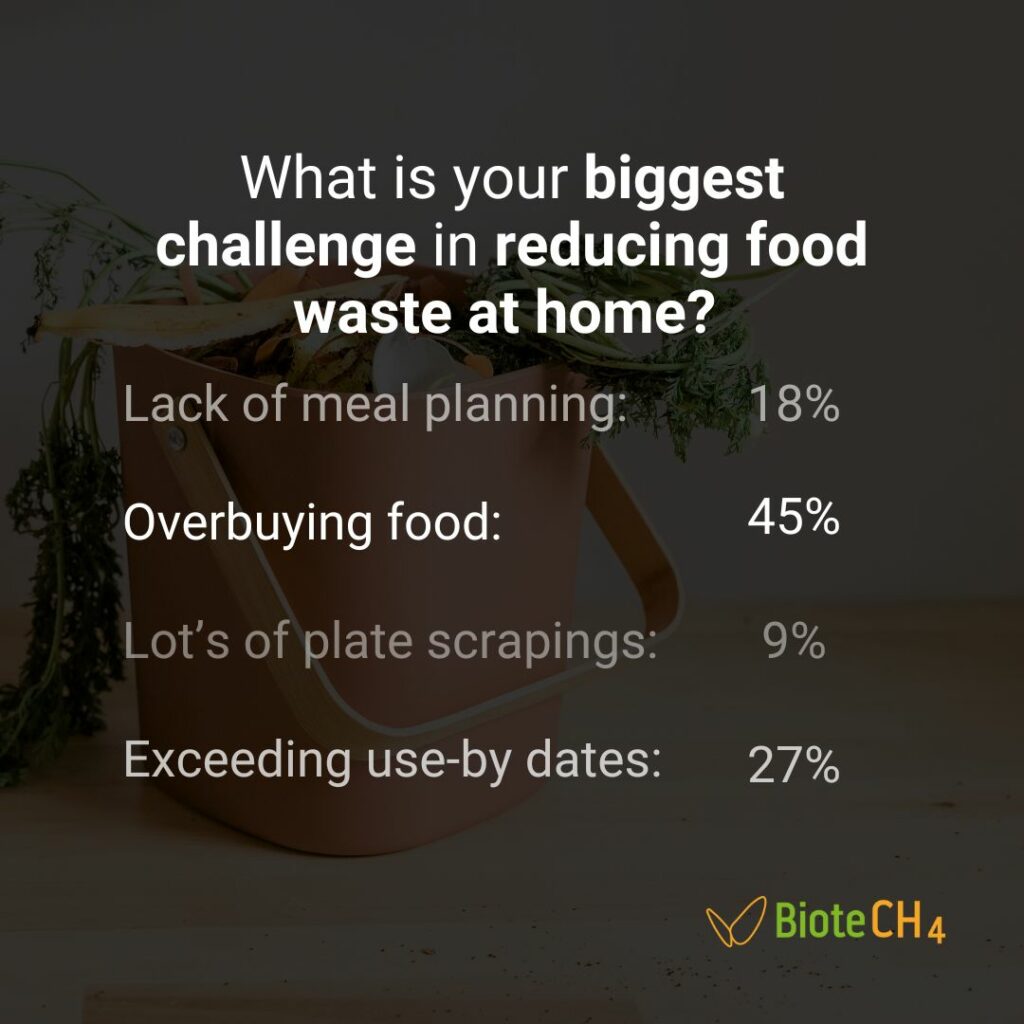Food Waste Recycling at Home in the UK: What It Means and Why It Matters
- Education
- -
Did you know that on average a family can waste between £700 and £1,000 every year by throwing food away? Not only is this financially crippling for the average household but it's also a huge environmental problem.
From March 2026, local authorities will be legally required to provide a weekly home food waste recycling service in the UK, as part of the Government’s Simpler Recycling Scheme. This is a great opportunity to rethink how we deal with food waste at home, helping the planet and saving money in the process.
Key Points
- Challenges we face at home
- The food waste hierarchy
- The impact of food waste in residual bins
- Anaerobic digestion of food waste
- How we, as residents can play our part
So, how much food are we wasting?
Present statistics suggest as a country, the average UK household wastes 6.5 million tonnes a year. This means around a quarter of the waste in your residual bin is likely to be food waste.
In the midst of a cost-of-living crisis, many families are changing how they shop, cook, and eat. Some are even forced to make difficult choices, cutting back on other essentials just to afford food. So, why is so much food still being wasted?
Common culprits include overbuying, lack of meal planning, and changes of plans. As a result, perfectly good food ends up unused. We need to be more mindful of what we buy, what we actually need, and what we do with food that’s edging toward its use-by date.
You might think, “Well, I have a food waste caddy, so I’m doing my bit.” But that’s not the full solution.

We ran a poll over on our LinkedIn to find out the biggest challenges households face with food waste.
The Food Waste Hierarchy
We should all be following the food waste hierarchy, especially when it comes to edible food. The hierarchy prioritises:
- Reducing waste at the source
- Freezing any perishables that may be inching towards their use-by-date
- Reusing or redistributing edible food
If no other option exists, that’s when your food waste caddy becomes important. Food recycled here is sent to anaerobic digestion (AD) facilities, where it’s broken down to create green energy and biofertiliser, a far more environmentally friendly outcome.
The Impact of Food Waste in Residual Bins
When food waste isn’t recycled in an appropriate way it is sent to landfill or incineration, which not only is a more expensive way for your local authority to dispose of waste, but it also decomposes in landfill and releases harmful gases such as methane – adding to the growing problem of climate change. Many local authorities have moved away from landfill, instead using incineration, also known as energy-from-waste, for residual waste disposal. This method is not as environmentally sound as recycling via anaerobic digestion. While it does generate renewable energy, all the nutrient benefits of recycling the biofertiliser back to land to grow more food is lost.
How can we change this?
The changes start at home, really. Your local authority will notify you through their communication channels on how they will be implementing these new food waste collections – which are a legal commitment with legislation. We understand that adding a new bin to your collection, the thought of food waste caddies sitting on your kitchen worktop and remembering to recycle food waste separately can seem daunting but there are many benefits as a result of adopting this new habit.
The average household can save between £700 and £1,000 on food bills by considering what they buy, how they buy it and how they use it.
Removing food waste from your residual bin will reduce smells in the kitchen and on the kerbside, with more frequent collections for food waste caddies.
The simple habit of buying only what you need, considering buying loose food and freezing leftovers all go a long way in reducing food waste.
By recycling your food waste, you’re helping to produce green energy and biofertiliser and reduce the impact food waste has on the environment.
The 'power' of anaerobic digestion!
We’re delighted to be partnering with many local authorities across the UK to support with the collection, processing and recycling of their resident’s food waste. We process over 600,000 tonnes of food waste every year and transform this into enough energy to power over 30,000 homes for an entire year!
We process food waste through anaerobic digestion, a simple process taking about 30 days in total to separate food waste from any packaging , remove bad pathogens and generate and capture gas (methane) which we process and use to power our site, and provide clean, green energy back to the UK gas and electricity grids.
The by-product of our process is a nutrient-rich biofertiliser which is spread locally on agricultural farmland to support our farmers. Saving them money and reducing their need to buy chemical fertiliser from overseas.
What is changing and why it matters
In early 2025 (March) the Government’s Simpler Recycling Scheme came into place, meaning every business employing over 10 people had to separate and recycle.
What’s set to change next is the introduction of food waste collections by local authorities (many already do this, and very successfully!) from households, this will be from March 2026. Again, individuals will be required to separate their food waste from existing bins (usually residual) and follow the simple guidelines set out by their local authority on how to recycle their food waste.
We’re all for this, obviously, but for very good reasons. Here’s why.
- It removes confusion around recycling, whether you’re at home, at work or school.
- It allows the correct treatment of food waste (food waste = fuel)
- It reduces the impact of food waste on the environment
- You’ll see an astonishing change in how you buy food and prepare and freeze meals
- You’re doing your part for the greater good – and who doesn’t love feeling warm and fuzzy!
How do you play your part?
It’s simple and you’ll be surprised how quickly this new way of diverting your food waste becomes normal.
Check out these easy steps.
- Use the kitchen caddy provided by your local authority
- Check what you can and can’t pop in your caddy
- Line with the liners provided by your authority / newspaper or old plastic bags such as bread bags
- Empty it outside into your larger caddy for collection (weekly) as and when you feel the need
- Keep it clean – did you know you can pop it in the dishwasher to ensure its spic and span ready for its next use?
- See the rewards of how quickly you notice where you’re wasting food, learn what else you can do to prevent it reaching your caddy and more here on the WRAP website.
What you should put in your food waste caddy:
- Raw and cooked meat and fish, including bones and shells
- Out of date and unsaleable food
- Fruit and vegetables, including peelings
- Dairy products (cheese, yoghurt)
- Bread, cakes, and pastries
- Rice, pasta, and beans
- Plate scrapings and leftovers
- Tea bags and coffee grounds
- Loose pet food (dry or wet)
- Small amounts of sauces, gravy, and custard
- Oil and fats
Small actions, big impact
We understand that change isn’t easy but the long-term benefits for our future generations and the short-term gain for our pockets are worth it. Every one of us has the chance to become a UK clean energy producer…well a contributor at least and that is a great thing.
The changes we’re expecting to see in March 2026 are a chance for everyone to make a difference, the power to drive positive change is in our hands…our bins!
For any questions about food waste recycling in your area, contact the waste team of your local authority. Happy recycling!



